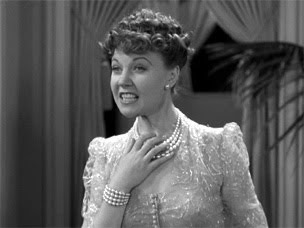
Of all the publications released by the current regime of FAMOUS MONSTERS (shorthanded as FM 3.0 and headed up by Philip Kim "Kong"), I was most looking forward to THE ANNOTATED ISSUE #1. My enthusiasm was slightly lessened when I learned that this publication would most likely contain a major chunk of what once had been published before, a special mock FM edition honoring the 90th birthday of Forrest "Forry" Ackerman, FM's legendary 1st and longest-standing editor. So it seemed to be a reprint, rather than the promised original publication per its promotion, but the original was rare nowadays and, when found, fetching high prices. I was still very eager to own and read this annotated edition, as it would surely, I thought, offer an invaluable look at the crafting of the first issue of the first monster magazine in the world that was published at the epicenter of the Shock Theater craze. After all, that's what the word "annotated" implies, something that digs deeper into the text being offered.
Unfortunately, the people who put this edition together do not know the meaning of "annotated." Annotated is not just reprinting some typescript of issue number one of FAMOUS MONSTERS OF FILMLAND. "Annotated" is offering editorial commentary at least--notes and research material that explain and expand upon the text being presented. There is no such commentary in this edition. It is
not "annotated."
What we have, as the meat of the edition, is a simple photographic reprint of what we are told is the 1958 manuscript of the 1st issue of FM, interspersed with full-page photo illustrations, worked on a bit through Photoshop, so they don't look like the actual photographs being used. The vast majority of the manuscript is type-written, but there are some minor corrections in hand dispersed about, yet there's no way of knowing if these come from the hand of Ackerman or James Warren, the publisher of FM 1.0, a man as equally legendary as Ackerman and who rarely gets the credit he deserves in the making and success of FAMOUS MONSTERS. Nor do we know if a copy of a handwritten listing of contents with remarks on them comes from Ackerman or Warren, either. One assumes they come from Ackerman, but readers will be unfamiliar with Ackerman's handwriting to make a judgement. If one compares Forry's signature, which can be found in the publication, the answer may be that the markings come from Warren! (Warren is still alive and may have been able to resolve this very easily. In fact, it's a considerable lost opportunity that this publication does not have Warren making his own comments on the manuscript or at least offering up an introduction to the whole.)
So rather than providing a genuine annotated edition of issue 1, which would have been work and have taken some knowledge and intelligence to put together, we have a cheat. Something being sold as something it is not.
That said, there are a few perks to this softbound edition, which is admittedly handsomely designed and on glossy paper, with a nice wraparound illustration by Pete Von Sholly. The first 33 pages of the 160 pages is made up of a reprint of Ackerman's "Birth of a Notion," in which the first editor of FM goes through the history of the rise and making of the 1st issue. Forry wrote variations on this article several times, but it's impressively illustrated and quite readable. Two articles follow this one--"Following Forry" by Kevin Burns and "The House that Ack Built (and Re-Built)" by Joe Moe--and both are equally very well illustrated and engaging reads.
There are several typescripts after the manuscript proper that are the most interesting pieces of all. One, shows the editorial markings (or were they the publisher's markings?) on a Shock Theater press release from Screen Gems that was employed in FM #1 as original matter. A couple of other typescripts look of interest, but since there is no
annotation regarding them, we are lost in suppositions as to where they may or may not fit into the history of FM 1. The one I got the biggest surprise from is something titled "TV Means Terrified Virgins." As you can see from the following sample sentences, it was definitely not meant for public consumption....
"The chips are down in TV, and so are the heroine's panties. It's the next step after strip-tease: pan-tease."
"One impatient televiewer's reaction was: 'I'd rather see a girl raped by a monster than watch a good five minute commercial.'"
"Yes, TV augurs well for Terrific Vaginas, Thrilling Vulvas and Tortured Victims."
Did Ackerman write this? If so, was it a way to let off steam from the task at hand? Was it sent around the FM "office", ie, to Warren? You won't know in the ANNOTATED edition that's being sold for $29.99.





































































